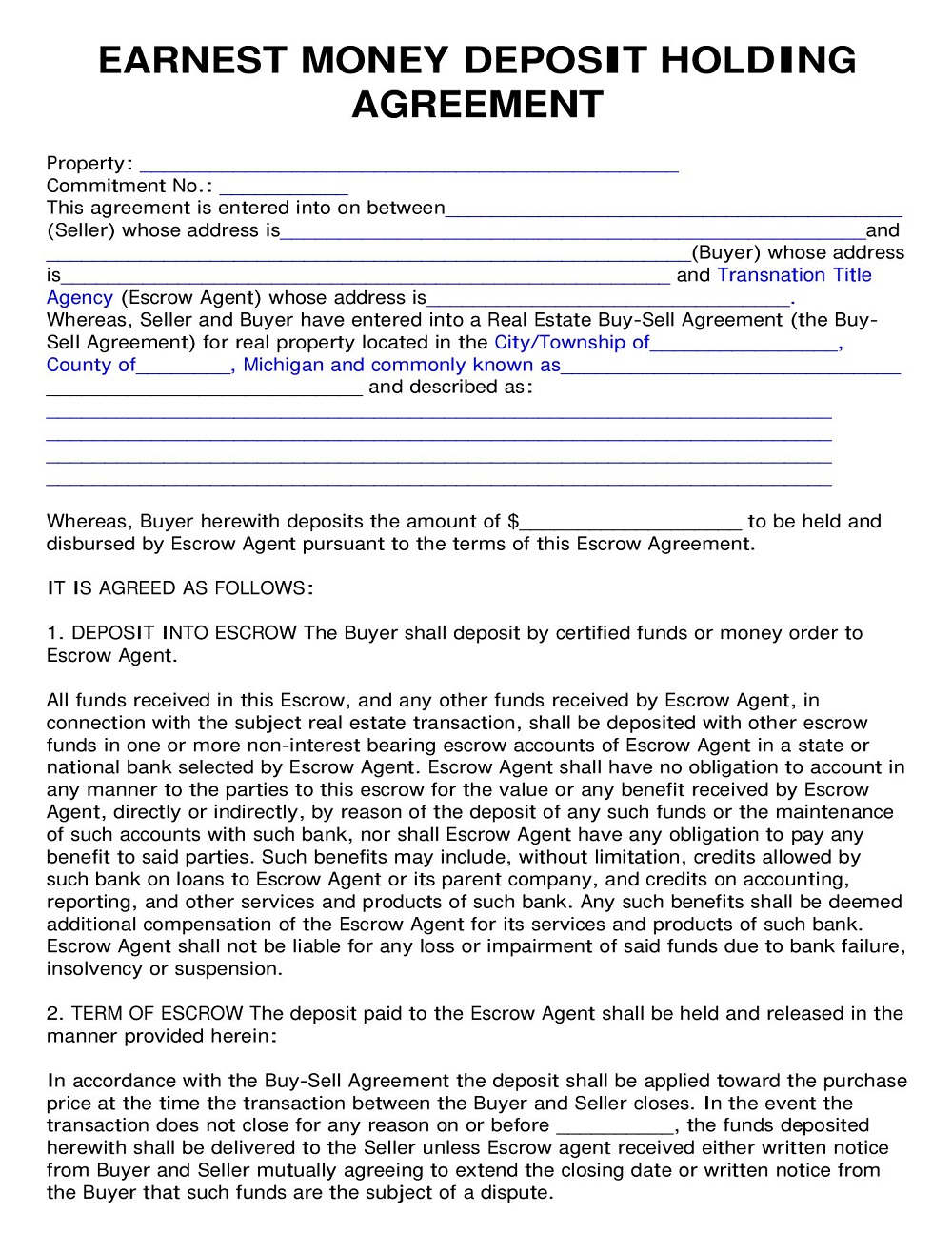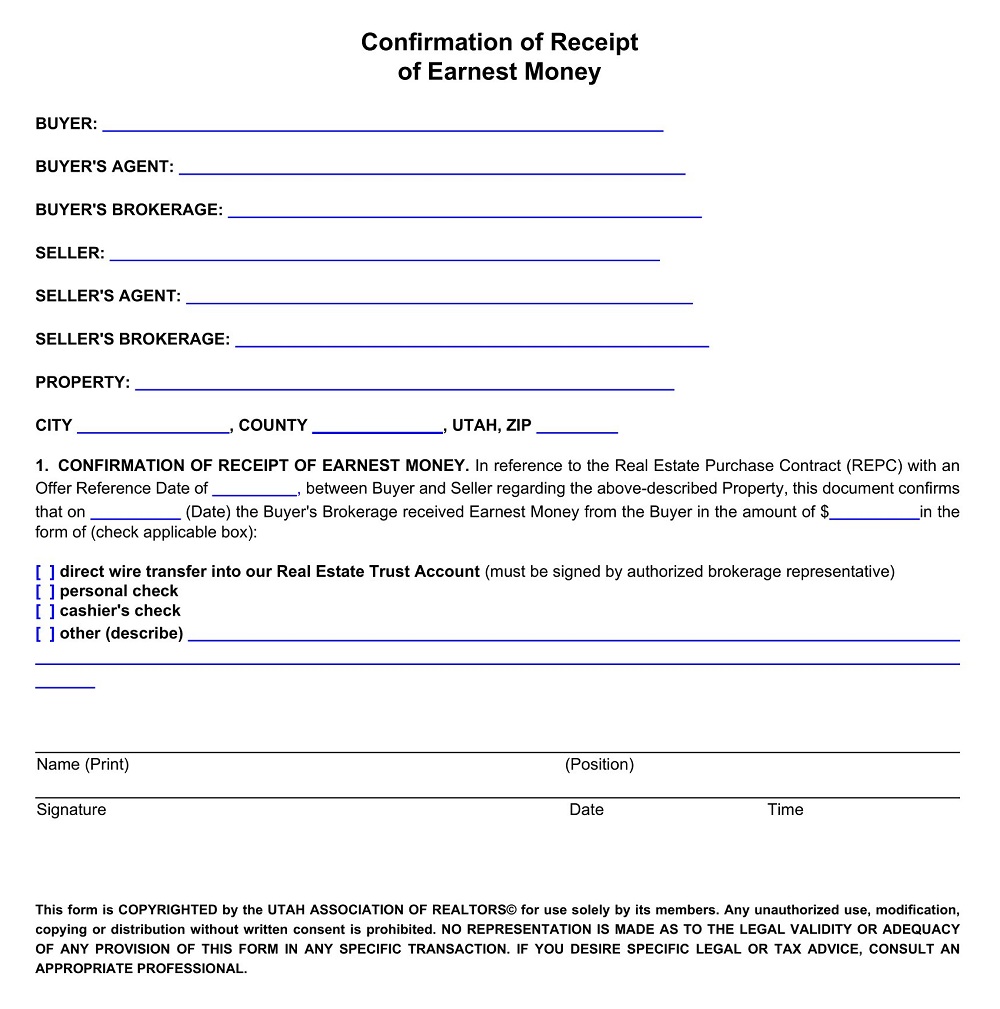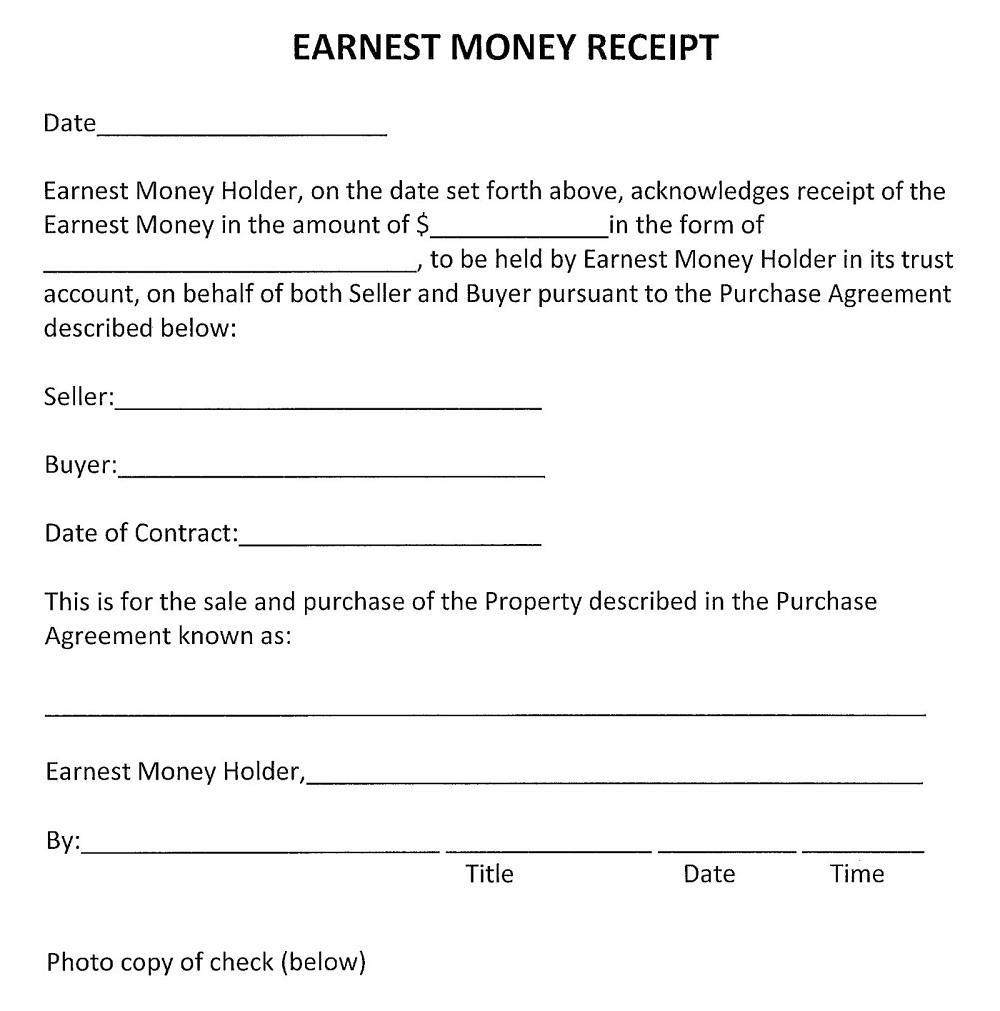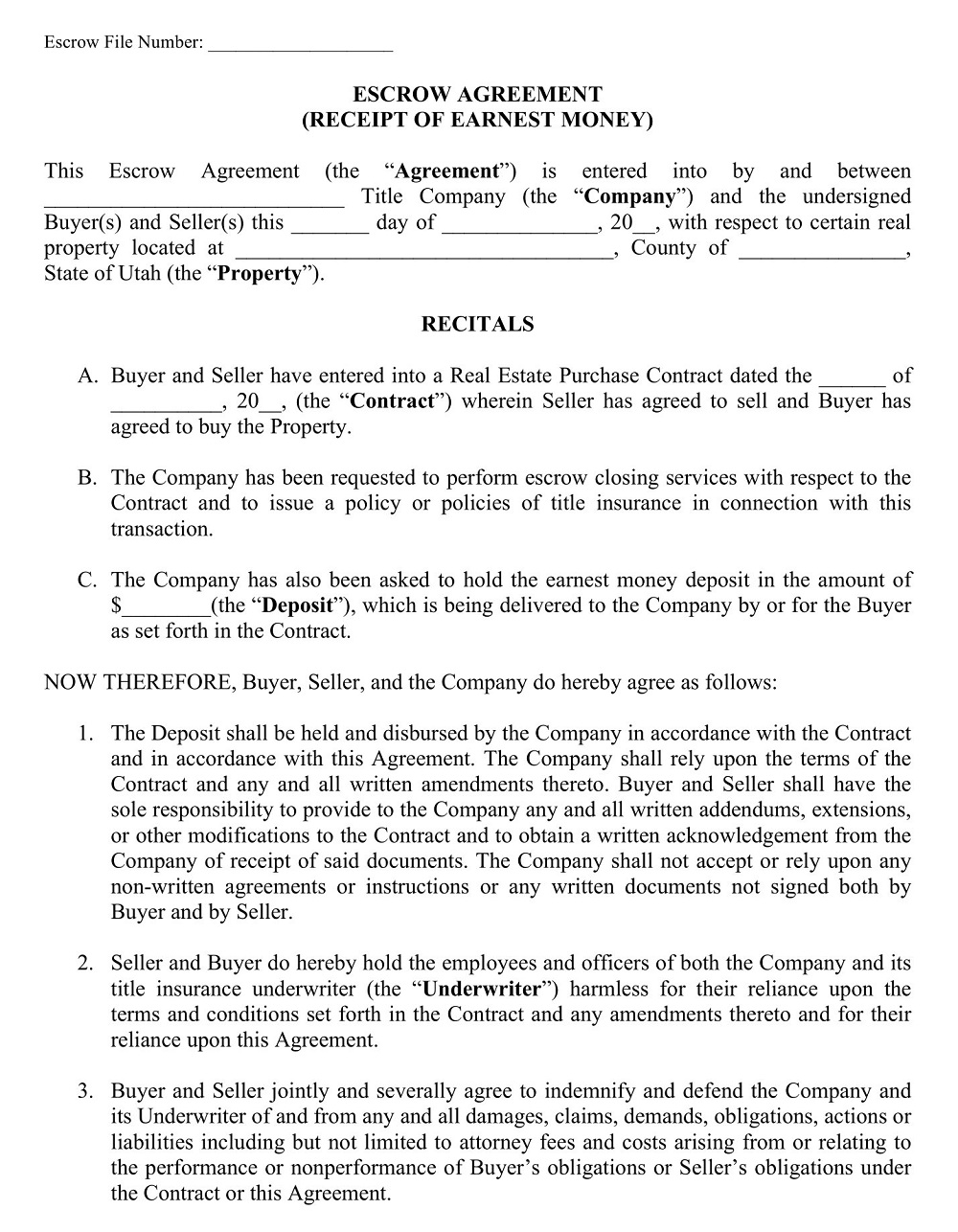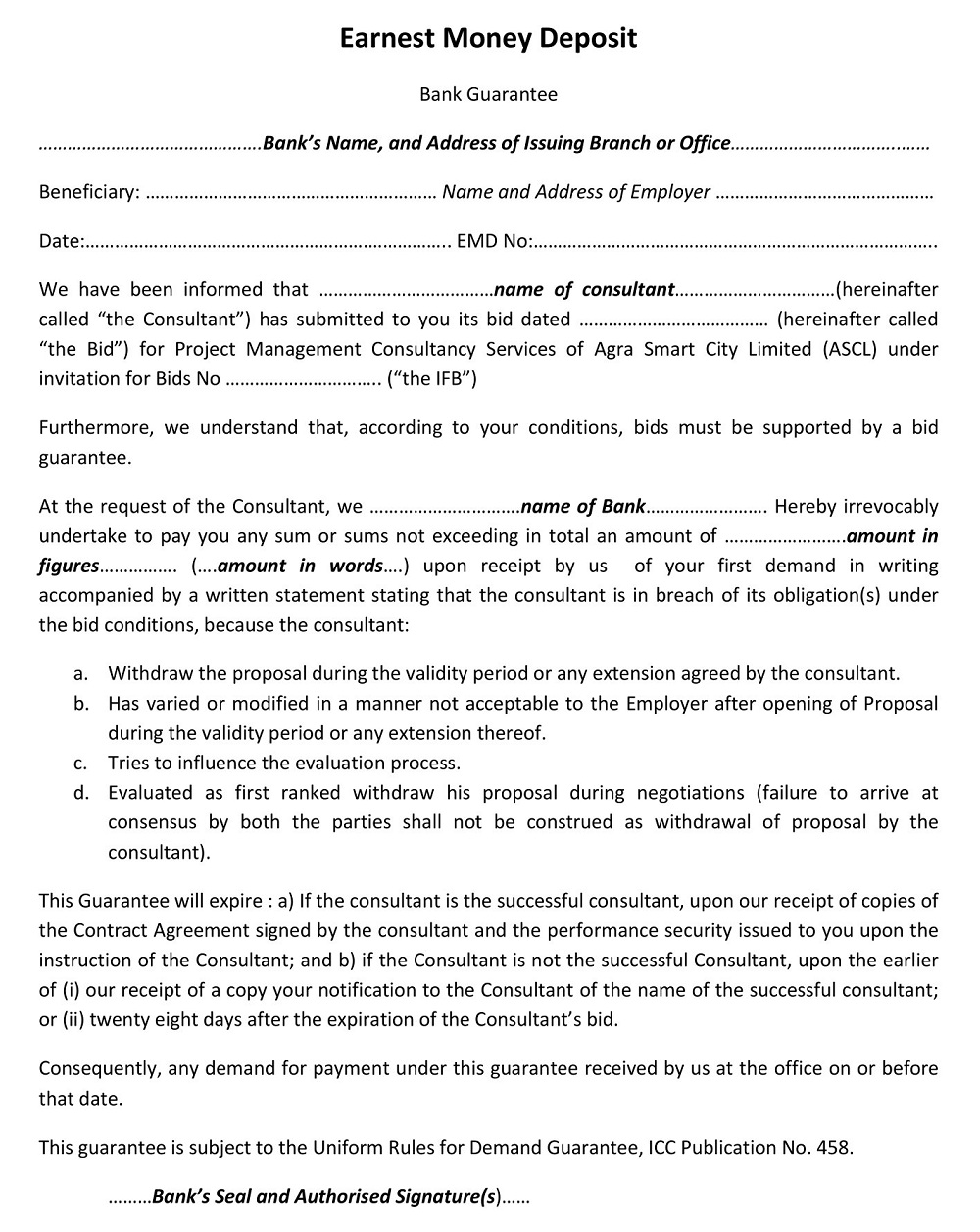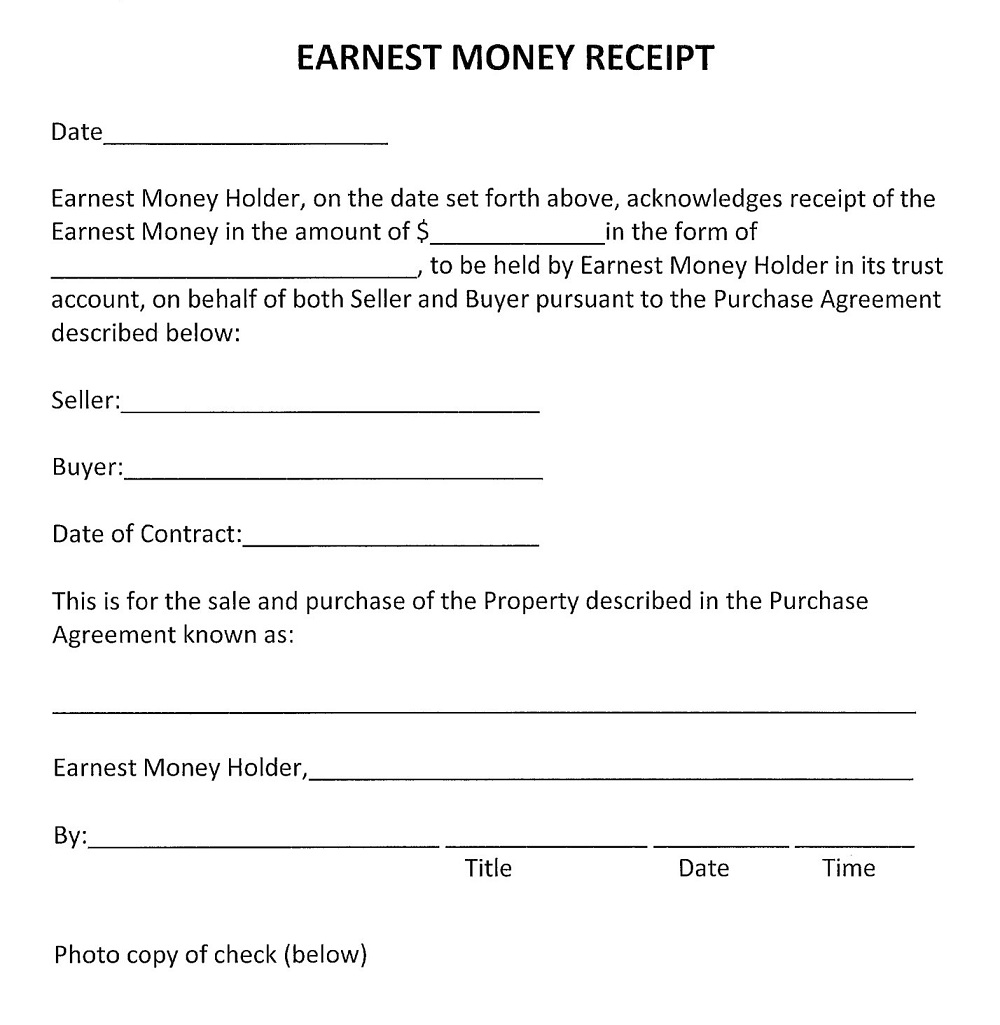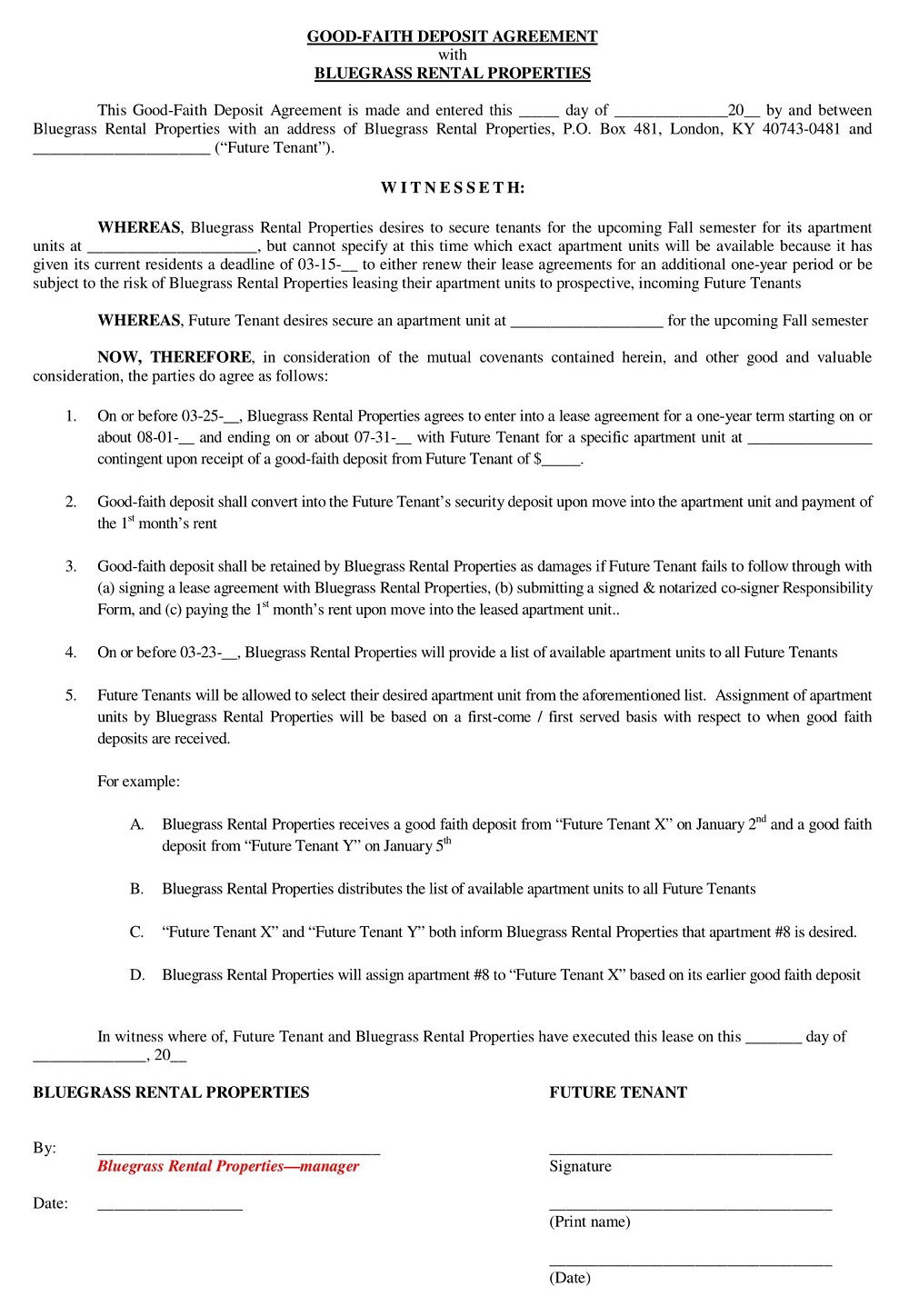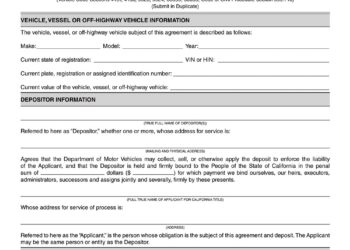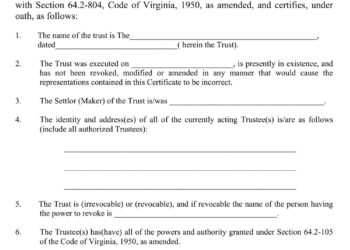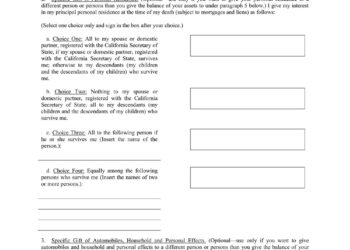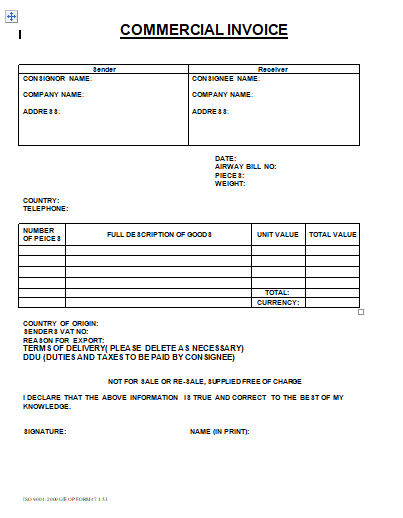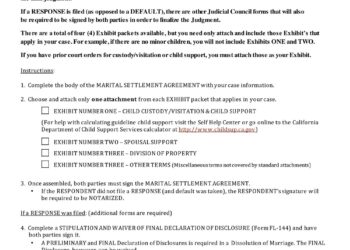When entering into a real estate transaction, you may hear the term “good faith deposit agreement form” thrown around, but what exactly does it mean? Essentially, this form is a legal agreement between the buyer and the seller outlining the terms of their transaction and the deposit to be made.
This deposit shows the seller that the buyer is serious and committed to moving forward with the purchase and assures the buyer that their funds will be protected in the event that the sale falls through. It’s essential to clearly understand this form and its implications before committing to any real estate transaction. In this article, you’ll find free Printable Good Faith Deposit Agreement Form & Templates and samples in PDF, Word, and Excel format to help you make your security effective.
As you navigate the realm of good faith deposits using our comprehensive “Good Faith Deposit Agreement Form, it’s essential to consider the specifics related to vehicle transactions. Explore our specialized Vehicle Deposit Agreement Templates to ensure clarity and fairness in your auto dealings. Together, they create a trustworthy and transparent process, ensuring both parties involved are on the same page, and fostering positive and successful transactions.
Download Free Good Faith Deposit Agreement Form & Templates
Blank Good Faith Deposit Agreement Form
|
Earnest Money Deposit Holding Agreement
|
Earnest Money Deposit Receipt Template
|
Earnest Money Escrow Agreement Template DOC
|
Earnest Money Receipt Form Sample
|
Good Faith Deposit Agreement Form Template
|
Printable Earnest Money Agreement Template
|
Real Estate Earnest Money Deposit Receipt
|
Sample Earnest Money Deposit Receipt
|
Simple Earnest Money Receipt Template
|
Simple Good-faith Deposit Agreement Template
|
What is a Good Faith Deposit Agreement Form
When buying property, it’s not uncommon for potential buyers to put down a good faith deposit, demonstrating their commitment to making the purchase. A good faith deposit agreement form is a contract between the buyer and seller that outlines the terms and conditions of the deposit. Essentially, it’s a legal document that ensures the seller that the buyer is serious about their intentions, while also protecting the buyer’s investment. This type of agreement can be especially beneficial for both parties in situations where there may be multiple offers on a property, as the deposit can serve as a deciding factor in the seller’s choice of the buyer. The agreement form provides peace of mind for all involved and can help ensure a smoother purchase transaction.
Benefits of a Good Faith Deposit Agreement Form
Signing a Good Faith Deposit Agreement Form can provide numerous benefits for both the buyer and seller as it sets the guidelines and expectations for the transaction. For the buyer, it ensures that the funds they have set aside for the purchase are secured and will be returned if the transaction falls through. Additionally, it shows the seller that the buyer is serious about the purchase and willing to commit to the sale. On the other hand, for the seller, a Good Faith Deposit Agreement Form guarantees that the buyer will follow through with the transaction, and if not, the seller can keep the deposit as compensation for the time and resources invested in the deal. This document adds an extra layer of protection and peace of mind for both parties involved, making it a valuable tool for any real estate transaction.
How to Handle Disputes Over Good Faith Deposits
When it comes to real estate transactions, disputes over good faith deposits can be a major source of tension and frustration. It’s important to remember that a good faith deposit serves as a show of good faith on the buyer’s part and as a form of insurance for the seller. If a dispute should arise, it’s important to remain calm and work towards a mutually agreeable solution. This may involve mediation or arbitration, or even the involvement of a real estate attorney. Whatever the case may be, it’s important to approach the situation with a level head and a willingness to find a solution that works for both parties.
Creating a Template for Your Good Faith Deposit Agreement Form
When writing your own good faith deposit agreement form, make sure you include all necessary information such as names of both parties involved in the transaction, addresses of both properties being purchased or sold, details about any contingencies or other special circumstances related to the sale (e.g., if there are restrictions due to zoning laws), dates when certain documents need to be signed or submitted, etc. You should also clearly specify how much money will be paid upfront as well as any additional costs associated with closing on the property (such as transfer tax). Additionally, include language stating that either party may terminate their obligations at any time prior to closing, this way neither side will feel trapped into making a decision they don’t want later on down the line. Making sure your agreement form covers all these points will help protect both parties from potential legal disputes and ensure that all involved understand their responsibilities throughout the process.
Reference Link



